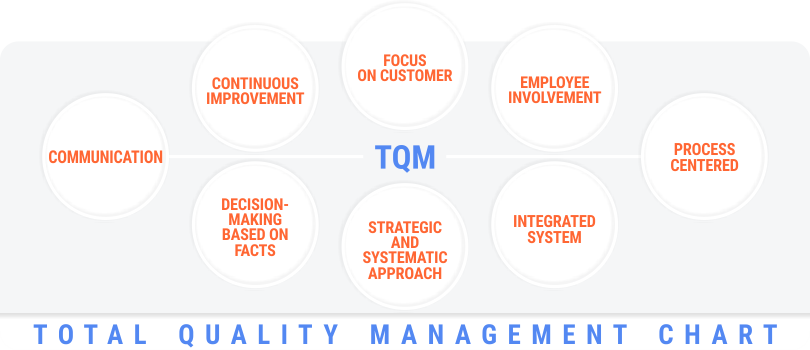The Different Types of Supply Chain Management Methods and Theories
Although supply chains have been used since the 1940s, many aspects of modern supply chains are still based on theories or relatively new methods. Because each individual business has its own needs, a “one-size-fits-all” supply chain solution doesn’t exist.
With this in mind, you and your logistics partner should determine the most effective methods and theories to apply to your supply chain. In some instances, the methods applied can positively affect multiple industries at the same time.
However, not every method or theory is going to have a positive effect on your specific industry or business.
With that in mind, these are some of the most common supply chain management methods and theories.
Transaction Cost Analysis
 A method based on financial models, transaction cost analysis (TCA) essentially looks at prices to determine whether or not goods were bought at a low price and sold at a high price. This analysis is generally performed over a specific period of time.
A method based on financial models, transaction cost analysis (TCA) essentially looks at prices to determine whether or not goods were bought at a low price and sold at a high price. This analysis is generally performed over a specific period of time.
When applied to supply chains, TCA determines whether materials or products were priced well when purchased and sold and, if not, how to find better prices.
As an example, consider an e-commerce company that wants to stock goods for the busy holiday season. TCA would look at past data to determine fair prices at which to purchase and sell goods. Supply chain managers can then apply this information to make better decisions for stocking warehouses.
Channel Coordination
Many supply chain and logistics companies handle supply chain management for multiple businesses. As a result, it is often in everyone’s best interest to look beyond individual channels and coordinate to reduce overall costs and save time.

Channel coordination explains this practice. A logistics company could see that realigning some channels can help meet the objectives of multiple customers. Channel coordination is most commonly applied to inventory management and ordering.
Network Perspective
Sometimes, it takes a third party to provide some perspective.
Chances are that your third-party logistics provider (3PL) is working with companies other than yours. Fortunately, this is something that can be leveraged to save everyone money. This is accomplished through network perspective (NP).
The NP model takes an existing network of businesses and looks at potential connections that can exist beyond what’s currently there. These NP connections are considered less “formal” because they aren’t traditional business deals or agreements.

By using the NP model, the supply chain becomes a value chain, and the vast network of interrelationships works to provide value to all the members. In other words, NP is essentially businesses working together via their common supply chain. This can look like many different things, but the basic idea should remain the same.
Materials Logistics Management
Supply chains often consist of an e-commerce business selling products online, with the 3PL taking care of warehousing, fulfillment, and shipping.
But the uses of supply chains extend beyond shipping final goods. Many companies need raw materials and are only able to find affordable options through materials logistics management (MLM).

MLM deals with the planning, sourcing, stocking, production, and distribution of physical materials. A 3PL should ensure that your business receives these materials on time so you can create the final product.
Businesses that use a 3PL for MLM can also have their logistics company negotiate for them. Because 3PLs are often working with multiple businesses, they can use the higher combined demand to drive down the aggregate cost.
Material Requirements Planning
Similar to MLM, material requirements planning (MRP) finds the lowest possible material inventory without affecting production. This cuts warehousing costs and prevents businesses from over-purchasing materials. Also like MLM, MRP includes purchase and delivery as well.
MRP can be further divided into two groups:

- Independent demand: This is demand for finished goods, such as cell phones.
- Dependent demand: This type of demand is for parts, such as cell phone chips, phone batteries, or phone screens.
While neither independent nor dependent demand deals with raw materials, both types of purchase would be included in MRP.
[Related: Innovative Kitting Services for an Efficient Supply Chain]
Theory of Constraints
If you hear about the theory of constraints (TOC) and its application to supply chains, it more often than not is referring to bottlenecks.
TOC is the idea that a constraint is limiting production potential or, in the case of supply chains, supply potential. A common constraint in supply chains is a bottleneck where goods are flowing smoothly.

After finding the constraint, a solution is put in place so the constraint is no longer an issue. Your 3PL partner should be able to implement TOC best practices.
Total Quality Management
Total quality management (TQM) is like TOC, only instead of looking at constraints, TQM focuses on streamlining the entire supply chain. This includes everything from start to finish, including training employees and ensuring customer satisfaction through reverse logistics.
TQM also looks beyond constraints, focusing on any area that could be improved. This method is much more comprehensive than TOC.
Customer Relationship Management
Whether you know it or not, your 3PL partner is directly impacting your customer relations. By acting as your shipper, your 3PL leaves an impression on your buyers.
But 3PLs can go even further with your customer relations with customer relationship management (CRM).

3PLs can compile and analyze data to find customer trends based on buying history and other available information. This lets 3PLs find better ways to interact with your customers, adjusting the supply chain to improve retention.
Because of the 3PL relationship, CRM works for both the customer (your business) and the customer’s customer (your customers). So, your 3PL partner should also be working to improve your mutual relationship.
Requirements Chain Management
Integral to having a positive relationship with a 3PL is requirements chain management (RCM). RCM is a 3PL’s way of adjusting their supply chain model to fit your needs and expectations. This is done through discussion between the business and the 3PL to determine how these needs and expectations are met.

While RCM sounds standard, not all 3PLs focus on meeting the expectations of their customers. Some 3PLs may not want to compromise the efficiency of their current supply chain just to make one of their customers happier.
However, when done correctly, RCM shouldn’t have a significant effect on the quality of the supply chain.
Supply Chain Roadmap
A supply chain roadmap should map out the entire system. This is an innovative theory that can only be accomplished through serious research and analysis.
Supply chain roadmaps are complicated because you and your 3PL will be determining exactly how your supply chain should run from the start, attempting to take every variable into account.
Normally, a supply chain roadmap emphasizes:
- Alignment
- Managing risk
- Value added
- Metrics

Utilizing the Right Theories and Methods
The more methods and theories you apply to your supply chain, the more complicated the process will become. That being said, supply chains can be made more efficient or customer-friendly with the right approach.
When you enter into a 3PL partnership, you and your logistics company should agree on which approach will be best for your business. Some methods and theories don’t apply to every business, and others may be the solution to an existing problem within your company.
Also, because of the complex nature of supply chains, the right combination of methods and theories could change over time. Find a partner that can grow and scale back with your business.
[Related: Outsourcing Versus In-House Shipping: Which Is Best?]





